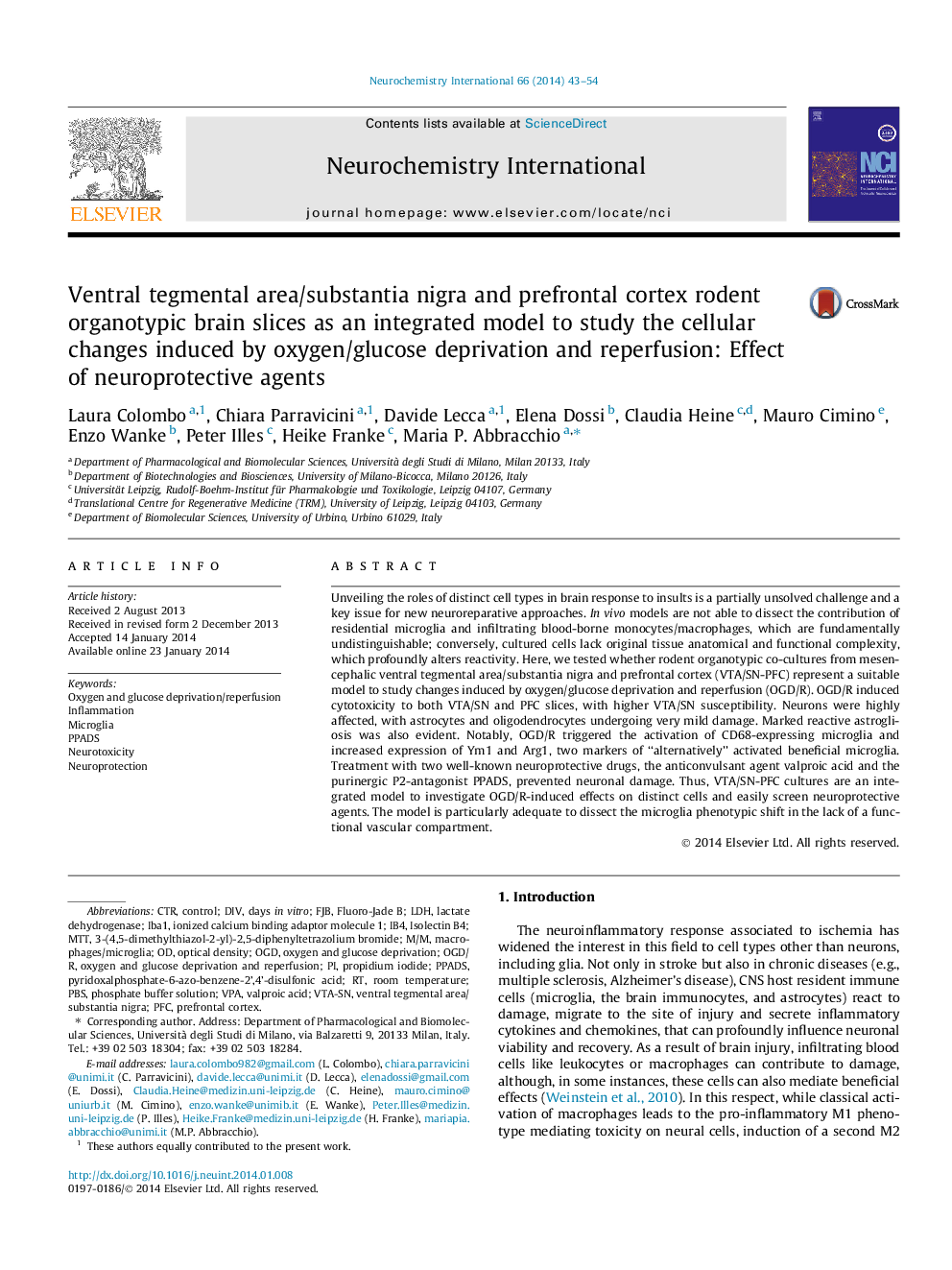| Article ID | Journal | Published Year | Pages | File Type |
|---|---|---|---|---|
| 2200653 | Neurochemistry International | 2014 | 12 Pages |
•VTA/SN-PFC organotypic co-cultures show cellular-specific susceptibility to OGD.•Neurons are mostly affected in parallel with a marked microglial activation.•The P2 antagonist PPADS and valproic acid protect organotypic cultures from OGD.
Unveiling the roles of distinct cell types in brain response to insults is a partially unsolved challenge and a key issue for new neuroreparative approaches. In vivo models are not able to dissect the contribution of residential microglia and infiltrating blood-borne monocytes/macrophages, which are fundamentally undistinguishable; conversely, cultured cells lack original tissue anatomical and functional complexity, which profoundly alters reactivity. Here, we tested whether rodent organotypic co-cultures from mesencephalic ventral tegmental area/substantia nigra and prefrontal cortex (VTA/SN-PFC) represent a suitable model to study changes induced by oxygen/glucose deprivation and reperfusion (OGD/R). OGD/R induced cytotoxicity to both VTA/SN and PFC slices, with higher VTA/SN susceptibility. Neurons were highly affected, with astrocytes and oligodendrocytes undergoing very mild damage. Marked reactive astrogliosis was also evident. Notably, OGD/R triggered the activation of CD68-expressing microglia and increased expression of Ym1 and Arg1, two markers of “alternatively” activated beneficial microglia. Treatment with two well-known neuroprotective drugs, the anticonvulsant agent valproic acid and the purinergic P2-antagonist PPADS, prevented neuronal damage. Thus, VTA/SN-PFC cultures are an integrated model to investigate OGD/R-induced effects on distinct cells and easily screen neuroprotective agents. The model is particularly adequate to dissect the microglia phenotypic shift in the lack of a functional vascular compartment.
